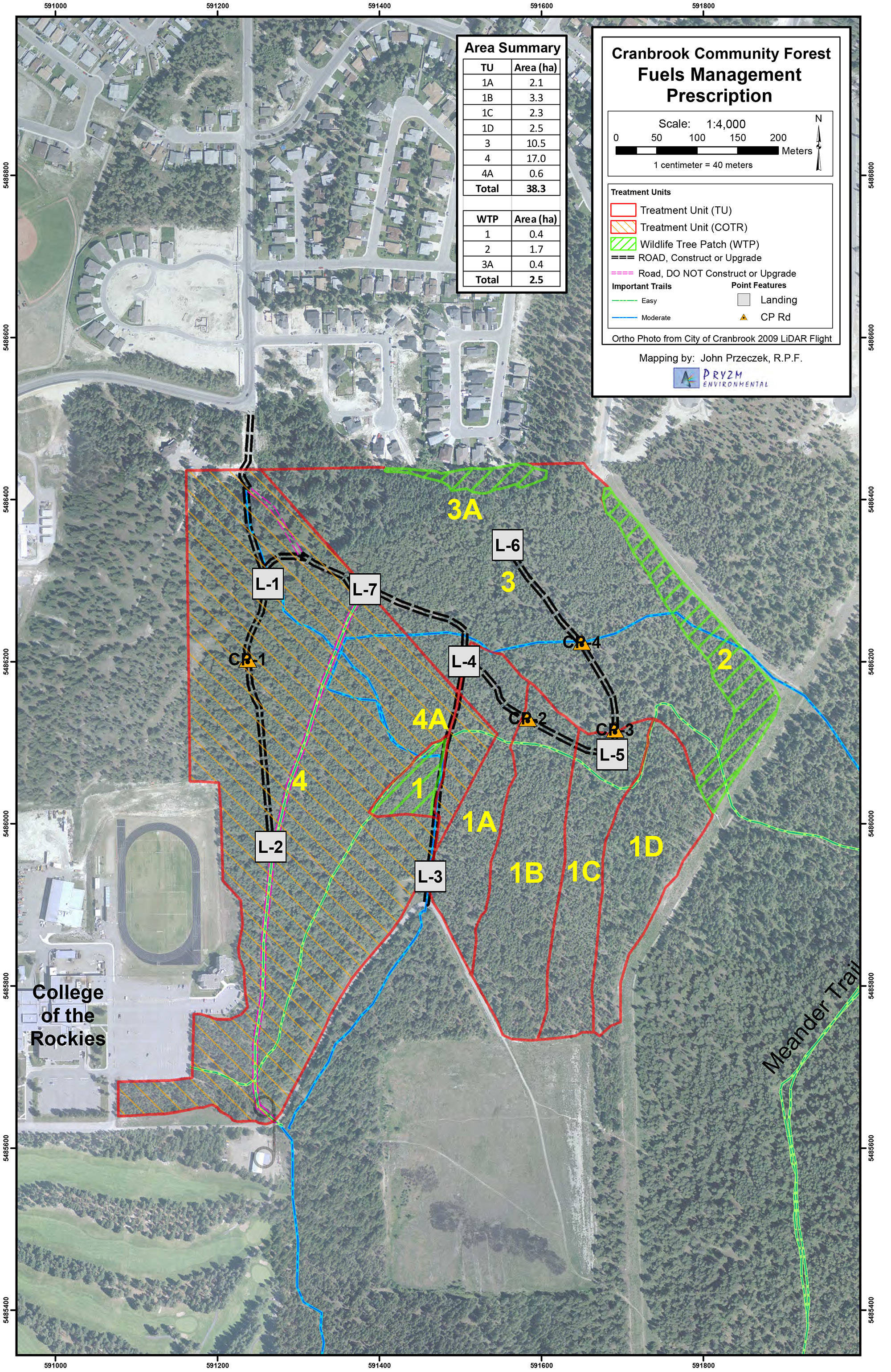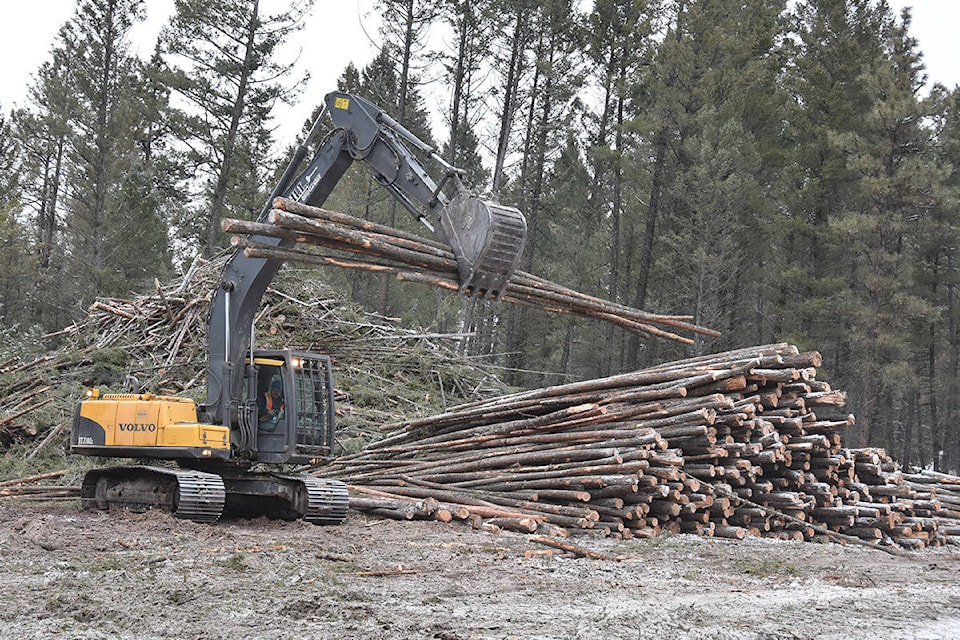A fuel management program remains underway in the Cranbrook Community Forest and on private land belonging to the College of the Rockies, as heavy equipment is being used to thin the forest.
Currently, the work is being done on the southeast side of the college facilities just off 30th Ave. near the Park Royal neighbourhood that involves 38 hectares. The public is encouraged to obey posted signage and to stay away from that part of the community forest while the project is underway, which is expected to wrap up in the spring.
The treatment program is designed to reduce the available fuels in the case of a catastrophic wildfire, which could threaten the College as well as homes in the surrounding neighbourhood.
The project has a few different aspects; while fuel reduction and mitigating wildfire hazard is a big priority, there are other residual benefits such as ecosystem restoration, says Grant Griffin, a board director with the Cranbrook Community Forest Society.
“It’s going to reduce fire hazard, it’s going to improve the growth and the timber,” Griffin said. “When we did the ground-level study, there was almost nothing on the forest floor at all, except for moss and debris. There was almost no grass, no shrubs whatsoever and that’s not a healthy forest, so that’s what our goal was, to get back to a healthy forest.”
Additionally, there will be a ‘demonstration forest’ — an area that will be broken down into four distinct boundaries showing what dense and thinner forests look like.
“We’ve recognized for a long time that our forest was not in good condition and we carried out minor projects and we got quite a bit of criticism from volunteers about killing trees,” added Griffin, “so we wanted to set up a demonstration [forest] in here, to show how trees grow in different spacings.”
Funding for the project has come from COTR, the Cranbrook Community Forest Society and the Forest Enhancement Society of BC.
While the College provided a large portion of the funding, it made sense to team up with the CCFS, said Al Knibbs, the COTR Director of Facilities.
Knibbs said the College’s involvement started with a conversation a few years ago, but talks sped up after the Alberta wildfires in 2016.
“It kind of made all of us change our mindset about what’s happening here and what’s happening up north and how it could happen here,” Knibbs said. “At the college, we feel it’s important. It’s our responsibility, it’s our land with the municipality surrounding it that we take care what could potentially be a fire hazard.
“Obviously we want to do our part for the community but we have our assets that are near the forest as well.”
Dan Murphy, the coordinator with the Rocky Mountain Trench Natural Resources Society, who is managing the project on behalf of COTR and the CCFS, said there were some important factors to consider when putting out a Request for Proposal.
Elements such as finding the proper harvesting company who could not only do the logging, but take care of other environmental aspects was important as well, Murphy said. Doing the work in the wintertime with the frozen ground also mitigates soil disturbance and the potential for invasive weeds, he added.
CHIL Logging Ltd, a local company, landed the bid and conducting the treatment, said Murphy.
While fuel reduction is the main priority for the project, there’s also some ecosystem restoration benefits as thinning the forest will help bring it back to a more natural state, Murphy said.
“Historically Mother Nature would have burnt these areas when there was nobody around to fight forest fires, then later, First Nations did burning to create wildlife habitat and for berries and other things that they were interested in,” he said.
“Then really, since the First and Second World War, we’ve become really good at putting out forest fires and fire has been taken out of the ecosystem here. That’s allowed the trees to propagate and become dense and squeeze out the shrubs and grass which are important to wildlife and all wildlife, not just deer and elk.”
But safety is still the number one priority, for both the operators and the public, Murphy said.
“The biggest challenge here is doing it safely in a heavily recreated area, although less recreated in the wintertime, there’s still people coming through here hiking and skiing, so doing it safely and also getting rid of that real small stuff and being able to utilize that biomass rather than putting it into the atmosphere as smoke.”

